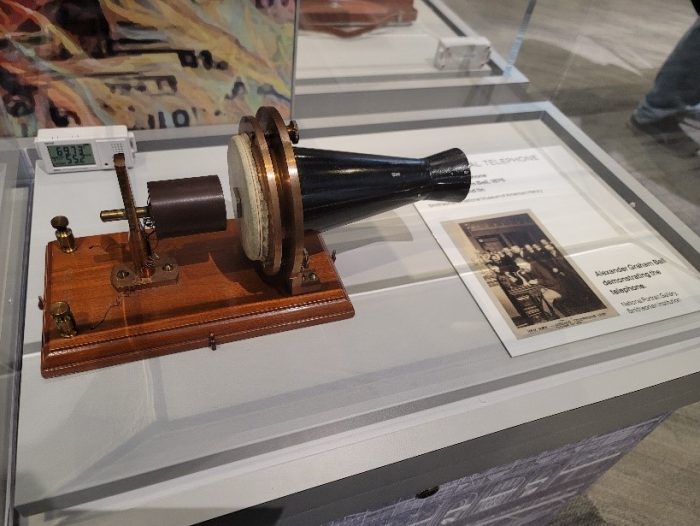The FUTURES are bright

Standing in the Arts and Industries Building, with its still rough and unfinished interior, one might not realize within FUTURES, the brand-new building-wide exhibition, that there are stories tied to the Smithsonian’s past. It visually echoes its neighbor and predecessor, the Castle in many ways—and purposefully. The red brick on the exterior uses the same palate as the Seneca sandstone that adorns the Castle. Its design is meant to harken some of the Gothic Revival elements of the Castle as well; but it also has its own identity, and is a step forward in time. When it was built, it was considered so cutting edge (fireproof, electricity, open floor plan, the first building designed to be the National Museum) that before it was even open to the public, it hosted President Garfield’s Inaugural Ball.
On display in FUTURES are other traces of Smithsonian history as well. When pulled forward in time they tell us the Institution has always embraced and preserved the past, while taking steps into the future. The building itself was a step forward. One of the first few objects visitors can see in the exhibition hints at the building’s own origins: a time worn puzzle box, something a tourist would have picked up, from Philadelphia’s 1876 Centennial Exhibition.

It was that exhibition, in which Smithsonian staff participated, that led to the need for the Arts and Industries building. Then-Assistant Secretary Baird convinced many of the exhibitors to donate their displays to the Smithsonian. They ended up filling 60 freight cars – far more objects than the already well-filled Castle could handle. But, it gave Baird and Secretary Henry the firepower needed to bargain with Congress to fund a new Smithsonian building that would be solely dedicated for use as a museum, rather than splitting its focus with research and other uses, like the Castle. Looking at the image on the box of that puzzle you can also see influences on the building’s architecture.
Stepping a little further into FUTURES, visitors can view Alexander Graham Bell’s 1876 Experimental Telephone. Bell had a long history with the Smithsonian. His invention was also on display at the same Philadelphia Exhibition. However, it may not have received the attention it did, or even come to be, without the Smithsonian’s first Secretary, Joseph Henry. As a young inventor, Bell had visited Henry at the Castle some years prior, looking for advice on how to make a telegraph that could transmit a voice; Henry spent two days with his visitor. Years later, when visiting the exhibition in Philadelphia, Henry steered the Emperor Dom Pedro of Brazil towards Bell’s mostly neglected display allowing the Emperor to utter the now famous words, “My God! It talks!”

Opposite the Experimental Telephone is a text panel discussing Joseph Henry and what is considered to be the first volunteer program at the Smithsonian: citizen scientists who sent weather information to the Castle via the telegraph. What makes this story all-the-more special is that the telegraph was an invention that was dependent on Henry’s own research and discoveries in electromagnets. (This is the reason Bell came to him for advice on his telephone.) Here we have so much that represents what the Smithsonian has always been: volunteers, researchers, and scientists using cutting edge technology to broaden our understanding of, and connection to, the world by sharing our own knowledge and experiences with others. The Smithsonian’s mission, to ‘increase and diffuse knowledge’, has always had its mind on using the past and present to help shape our future for the better. A quote from Oliva Butler’s Parable of the Sower is also on display and seems to also describe the Smithsonian and its relationship to the future, “All that you touch You Change. All that You Change Changes you. The only lasting truth Is Change.”

Anne-Marie Gilliland is the Castle Volunteer Coordinator for the Office of Visitor Services and Volunteer Management. She has been working remotely with docents over the past year to develop virtual content for the Castle and has really enjoyed the deep dive into Smithsonian history that this has allowed her.
Posted: 20 December 2021
-
Categories:
Collaboration , Education, Access & Outreach , Volunteer Voices







